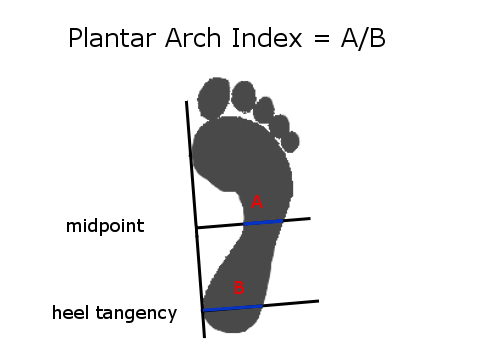During the first several months of the project, I made ink footprints that I measured to see if my arch was improving. I used the measurements to calculate something called the Plantar Arch Index.
The plantar arch index establishes a relationship between the central and posterior regions of the footprint, and it is calculated as follows:

- A line is drawn tangent to the medial forefoot edge and at the heel region.
- The mean point of this line is calculated.
- From this mean point, a perpendicular line is drawn crossing the footprint.
- The same procedure is repeated at the heel tangency.
- Measurements are obtained of the width of the central region of the footprint (A) and of the heel region (B) in millimeters.
- The plantar arch index is calculated by dividing the A value by B (PAI = A/B).
Basically, this index is comparing the width of the heel to the width of the middle of the foot in standing. A lower index value means a higher arch.